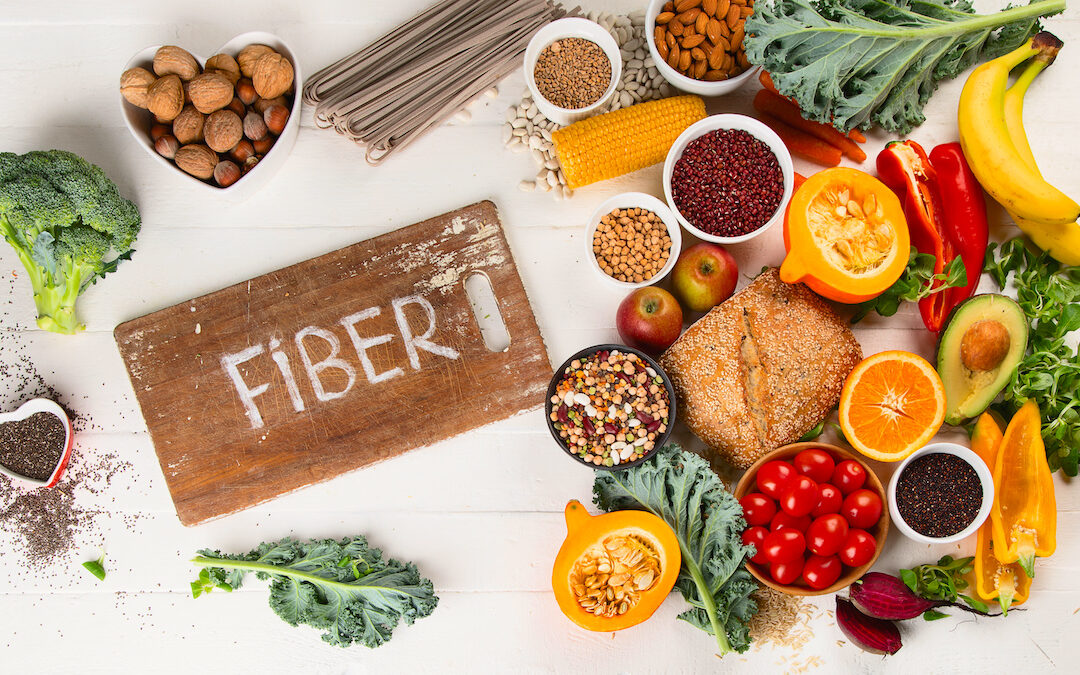Now is a good time to embrace high-fiber meals to improve your health. Indeed, the benefits of a fiber-filled diet on your body can’t be underestimated. It reduces your risk of many conditions, including constipation, diabetes, high cholesterol, neurodegenerative disorders, cancer, and other health-related diseases. Moreover, it can keep you fuller for longer, making weight loss possible. Below are six simple ways to eat more fiber every day.
1. Jazz Up your Morning with Oatmeal
Have you ever considered the timeless breakfast staple that is oatmeal? It boasts many essential nutrients and fiber that your body craves. However, there is nothing to worry about if you find a bowl of oatmeal bland and unappetizing. You can amplify this dish in many creative ways.
Jazz up your oatmeal by including your favorite fresh fruits, nutritious nuts, and seeds in this dish. Sliced bananas, chia seeds, and almonds are great options, so feel free to leverage them. There are limitless ways to make breakfast easier and enjoy oatmeal to satisfy your daily fiber needs, so keep this in mind.
2. Snack on Fruit
Fruit makes a fantastic snack. Apples, pears, and berries are high-fiber, tasty, and portable, making them excellent snacks. All fruits contain fiber; however, some have much more than others. A tiny pear, for example, has about 5 grams of fiber, but a mug of watermelon contains less than 1 gram, according to FoodData Central. Apples and berries are also high in fiber. Keep also in mind that fruit fiber can increase, especially when combined with foods high in protein and fat, like cheese and nut butter.
3. Add More Veggies and Eat them First

Consuming vegetables is beneficial for various reasons. For starters, they can reduce the risk of various chronic illnesses. Moreover, they are abundant in nutrients, especially fiber, while low in calories. Vegetables are also packed with essential vitamins, minerals, and antioxidants, making them a nutritious addition to any meal. To get the most out of your veggies, try incorporating them into your meals as much as possible.
Consider eating your veggies first to help fill you up, reduce your overall calorie intake, and get more of them throughout the day. For example, start your meal with a salad or soup made with vegetables. Also, to increase your fiber consumption, add chopped veggies to your dishes like pasta, rice, or stir-fry. Making this food group a priority in your diet can improve your health, boost your fiber intake, and make you feel your best.
4. Select Whole Grains Over Refined Grains
Whole grains are lightly processed; therefore, the whole grain remains intact. Whole grains include both the germ and the bran, which makes them a healthier alternative than processed grains. Some examples of whole grains include whole-wheat flour, bulgur wheat, oatmeal, brown rice, buckwheat, amaranth, millet, quinoa, and wheat berries.
Refined grains, on the other hand, have been deprived of their fiber-rich bran and vitamin-rich germ. This extends the grain’s life but removes the most nutritional components, leaving merely a fast-absorbing carb. Examples of refined grains include white and wheat flour, enriched bread, and white rice. Aim to replace most of your refined grains with whole-grain alternatives.
5. Don’t Peel Your Potatoes
When it comes to potatoes, many people tend to peel the skin off before eating them. However, this practice could result in missing out on many of the health benefits that potatoes offer, including their rich fiber content.
Potato skin is an excellent source of fiber, and leaving it on while cooking and eating can greatly increase your daily intake. Potato skin contains antioxidants, vitamins, and minerals essential for overall health. You can also enjoy potatoes as an easy side dish. For instance, crispy pan-fried potatoes are ideal comfort food and are a terrific way to add fiber to your diet, so feel free to consider this.
6. Lean on Legumes
Legumes’ status as a dietary fiber powerhouse solidifies its place as a fundamental aspect of a nourishing meal plan. But there’s more! Legumes also possess an abundance of vital nutrients like protein and complex carbohydrates, making them a go-to for those seeking to bolster their nutritional intake.
Legumes boast many delicious and versatile options, including lentils, beans, and chickpeas. The possibilities for incorporating legumes into your diet are endless, from mouth-watering soups and stews to nutritious salads and dips. With the bonus of upping your fiber intake and optimizing your overall well-being, there’s no excuse not to partake in the benefits these leguminous legumes offer.
The bottom line is adding more fiber actively makes positive changes to your diet. You can make fiber a regular staple in every meal easily. By including the above simple strategies you get to eat more fiber every day and support your health goals.
To a Fitter Healthier You,
The Fitness Wellness Mentor



